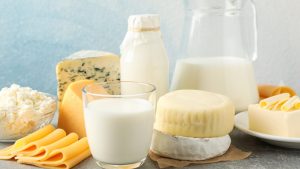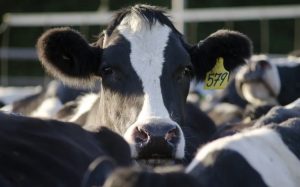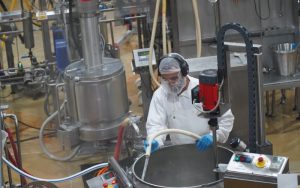
The latest Global Trade auction barely rated a mention in the news. This was due to a number of things. We are now ‘officially‘ between seasons so less interest gets taken of the global price of dairy products.
Also, at a change of +0.1% the price has barely shifted in its overall average. And the coverage of the protests in the USA, plus Covid-19, have been dominating the headlines.
However, despite the minor overall shift there were some interesting moves in the products New Zealand follows more closely. Of the drops cheddar cheese led the way with a reduction of -5.3%. Butter was not far behind falling -4.4% and skim milk powder -0.5%. Happily, whole milk powder was positive with a lift of +2.1%. So, while the headline rate was fairly innocuous and given the global environment, the downsides could have been considerably worse.
The 2.1% rise in WMP is quite a way ahead of the futures price which was down -1%.
China along with the Middle East, Europe and South East Asia were all active. The biggest downside is the reminder that WMP, our main farmgate driver is down -15% below the year’s peak in January, and -9% below the average of the past three years ($3040). Early days for the new season ahead and to date nobody is making any rash predictions on the up side.
Politics messes trade flows – the ugly details
It’s probably naïve not to expect politics to have permeated most areas of life but it seems at the moment we are seeing a proliferation of the influences. Both within New Zealand and abroad (of which a large portion we cannot escape importing). Agricultural exports risks wax and wane along with the moon. Back in January Trump had, surprisingly, managed to get some concession from China to rebalance some of the trade figures between the USA and China, by getting China to agree to import more agricultural products. This had the potential to spill over into our exports if China chose to buy USA rather than products from New Zealand notably beef.
For the earlier part of the year, the greater volumes that flowed from the US to China were soybeans and corn with pork also having a resurgence recently. With the tiff China has been having with Australia, largely around arable crops but also beef, it was looking as though the USA would also be the benefiter from Australians loss. However, with Trump seeking to make political capital from China’s treatment of protesters in Hong Kong and the lack of diplomacy over where the coronavirus source is, cracks are appearing in the January agreement.
The volumes of what China agreed to purchase that came out of the January “phase 1 agreement” were always looking pretty aspirational rather than realistic. The deal stipulated that Beijing would buy US$77 billion in additional goods and services in 2020 and US$123 billion in 2021 to meet the total US$200 billion. China bought $186 billion of US goods and services in 2017.
Combined with the new incremental agreement, US exports to China should in theory climb to US$263 billion in 2020 and US $309 billion in 2021. Either amount would mark a record-breaking acceleration for American exports to China. Of the above amounts agricultural goods were to make up US$12.5 billion in 2020, US$19.5 billion in 2021. This is on the back of 2019 U.S. farm exports to China being the lowest in years as a result of China’s retaliation against Trump’s tariffs on US$250 billion of Chinese goods. Estimates of the 2019 farm exports are US$6.5 billion in fiscal 2019, which ends Sept. 30. That’s down from US$16.3 billion in fiscal 2018 and more than US$20 billion annually when Barack Obama was president. So the Phase 1 agreed amounts while well up on 2019 were still considerably lower than previous years.
So far through the first six months of fiscal year (October to March) 2020, US agricultural exports to China totalled US$8 billion, US $3.9 billion, or 97%, above prior-year levels, but more than 50% below levels prior to the retaliatory tariffs imposed on US agricultural products by China, i.e., US$16 billion year-to-date in fiscal year 2017.
The word is that China Communist Party heads have been telling China’s companies not to buy USA and it appears that Brazil, for farm products anyway, has been the beneficiary. Purchases from Brazil to China are up in by 32% on 2019 and China makes up over 40% of total Brazilian exports. Given that soy and fuel, which in the past most came from the USA, make up the bulk of Brazil’s exports it can be seen that China has indeed walked away from the Phase 1 deal. They could have enacted an “Act of God” clause which likely would mean they would not be obligated to ‘honour’ their part of the deal but to date it does not appear that they have. Trump’s decision to remove Hong Kong of its special status (May 29th) since Beijing’s creation of a national security law is deemed an encroachment on Hong Kong’s separate legal system. Not yet enacted but on the books so able to be done at any time.
China’s action is likely to be designed to put more pressure on Trumps support base. Forbes have reported that “Phase two looks dead in the water”. On the farm the USA Dept of Agriculture has reported that while farm foreclosures have not increased they are expecting the rate of “delinquency loans“ (loans defaulted on) to increase. This is due to a combination of poor commodity prices, trade disputes and the impact of coronavirus. The amount of loans the USDA’s Farm Service Agency has lent to farmers was an eye watering $12.7 trillion dollars, and more than $639.4 billion of that amount was delinquent as of April 30. The largest percentage of those with loans are new farmers and smaller farms. The US Agriculture Department has begun accepting applications from May 26th under the Coronavirus Food Assistance Program, which will provide up to US$16 billion in direct payments to farmers and ranchers impacted by the coronavirus pandemic.
Drought assistance ignored
The farmers affected by drought in New Zealand must wonder what has to happen in their sphere to get some real support from government. Given the roll out of support funds for all sorts of other sectors in the name of keeping jobs and stimulating the economy I would have thought a good argument could have been made for at least the drought affected regions of Northland and Hawkes Bay.
One thing farmers excel at is spending, it is in the nature of the business and the proof is the multitude of small towns etc that survive on farmer spending. Perhaps the Minister of Primary Industries does not have much of a voice at the bargaining table when the cash is being dished out. With over $200 million going to the arts and cultural sector, and I’m not arguing against that, you could be excused for thinking that some more could have been found for the export sector, or have I missed something. Perhaps the M-Bovis fund was it.




















